This Browning Mark 4A transmitter pulled me down the rabbit hole. It just would not give me the correct channel frequency. Replaced the 8-Volt regulator chip that runs the PLL. Didn't fix the fault, but the faint hum on the transmit carrier is now gone.
There is a CD4008 4-bit adder chip between the microcontroller (CPU) and the PLL chip. Changed that, now I get different wrong frequencies. Changed the MC145106 PLL chip. No change.
This left me with one remaining part to blame. The TMS1022 microcontroller that runs the channel digits, selector knob and feeds the binary code to the PLL.
This part costs a better part of a hundred bucks shipped. But if that's what it needs, no substitutes exist. The programming in this integrated circuit can't be changed. No "erase and flash" chips existed in 1978.
Gently pulled it out of the socket. Bad news. Eight pins have rotted through enough to fall off. Not good. Is there a word for "octaplegic"?
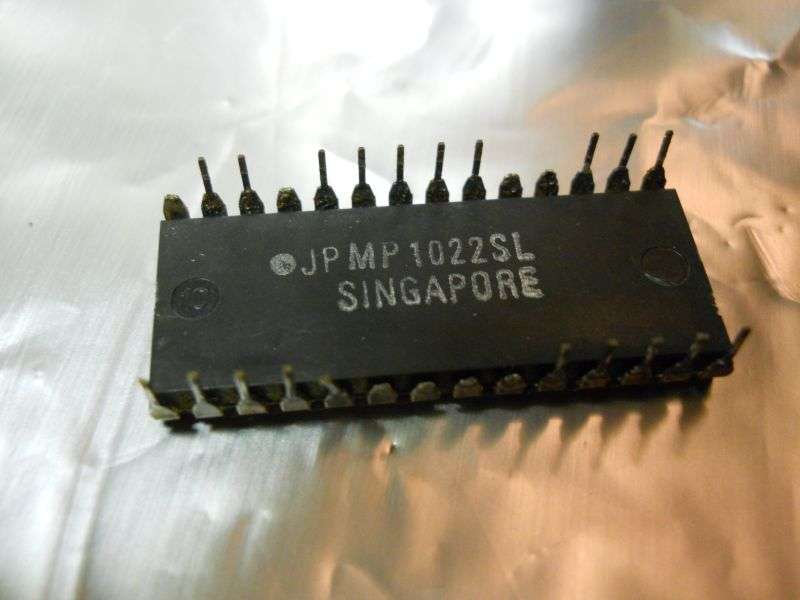
Even if this part is in fact working like it should, there's a problem getting it connected to the radio with eight pins missing.
Tried a spare TMS1022, didn't change a thing. Looks like the chip with the eight broken legs was okay before the stress of removal.
But hey, found the problem and now it works with the expensive replacement chip. A previous 'extra' channel expansion had been botched, and that was the root of the fault. But what about the factory chip? The pins are silver plated. Texas Instruments did this to reduce the heat needed to solder the pins. But this radio puts it into a socket. Exposed silver will tarnish. Tarnish is not a good electrical conductor. I suspect there is some chemical interaction that made the broken pins fall off. Good thing it's only eight of them. Gonna try an octaplegic wheelchair, so to speak.
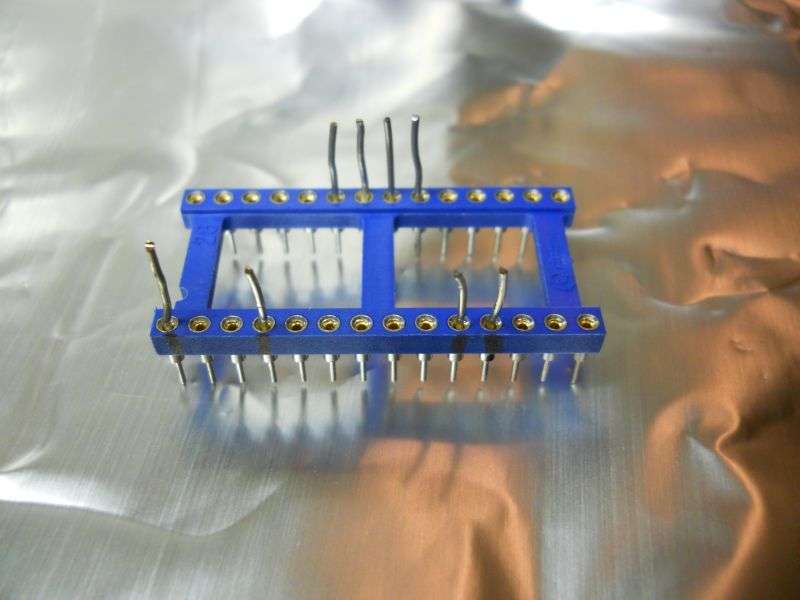
This 28-pin socket has what they call "machine-tool" pins. Gets a good grip on a #24 wire and requires very little force to insert the chip.
Gotta tin the remaining "shoulders" where the pins fell off. Will require some flux. This liquid flux should do the job.
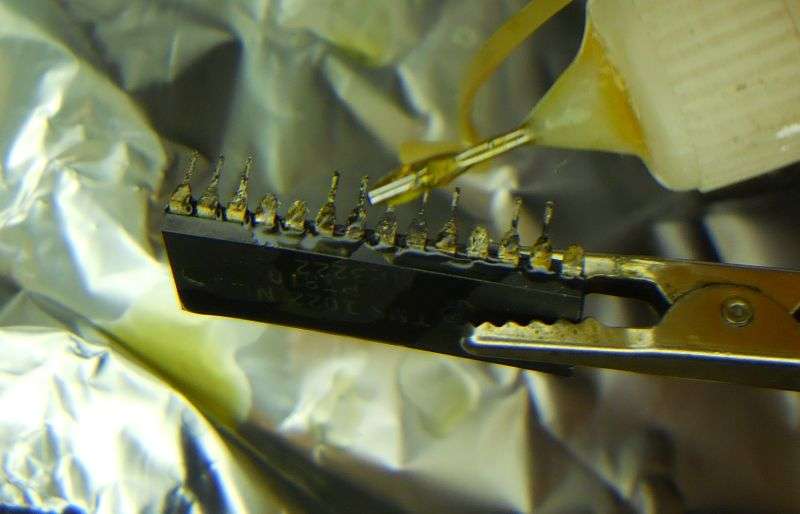
With any luck the heat needed to tin these surfaces won't cause internal chip damage.
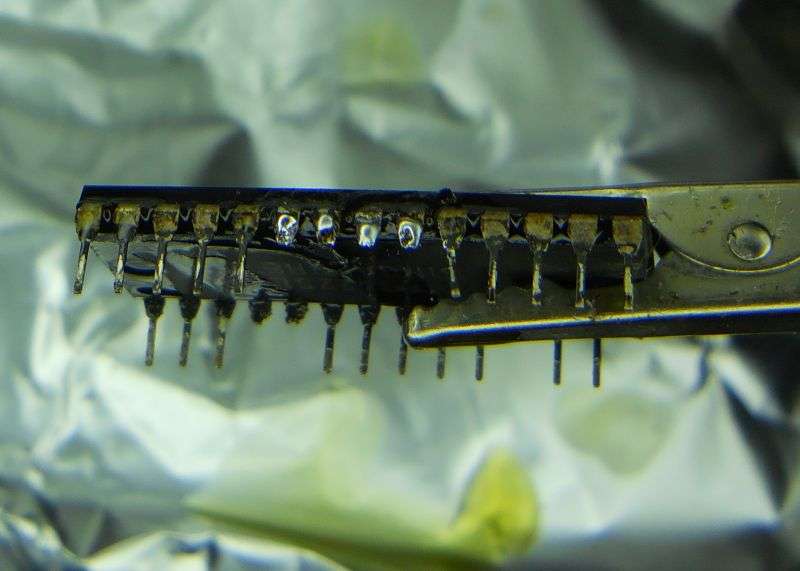
Seems to solder up okay on this side.
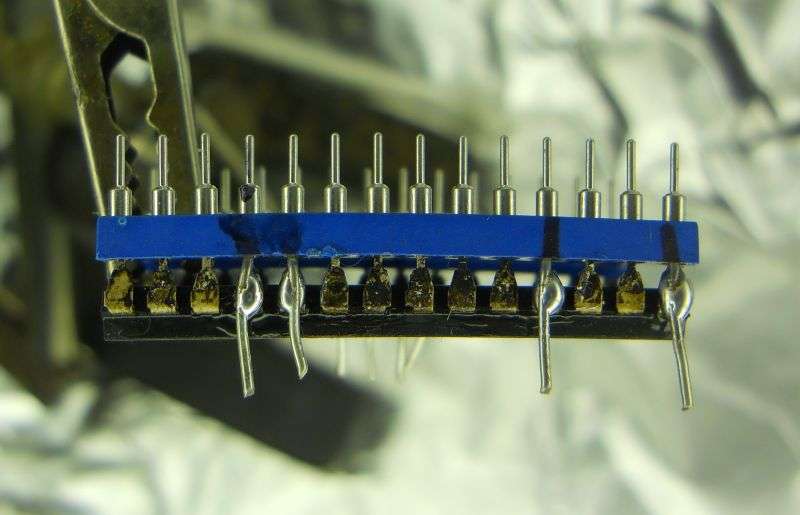
And this side.
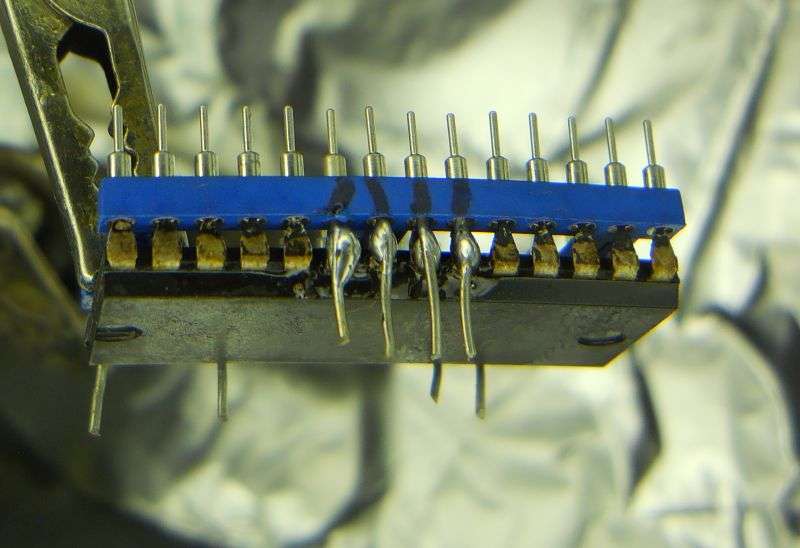
Once it's in place, we get all the correct 40 channel frequencies where they should be.
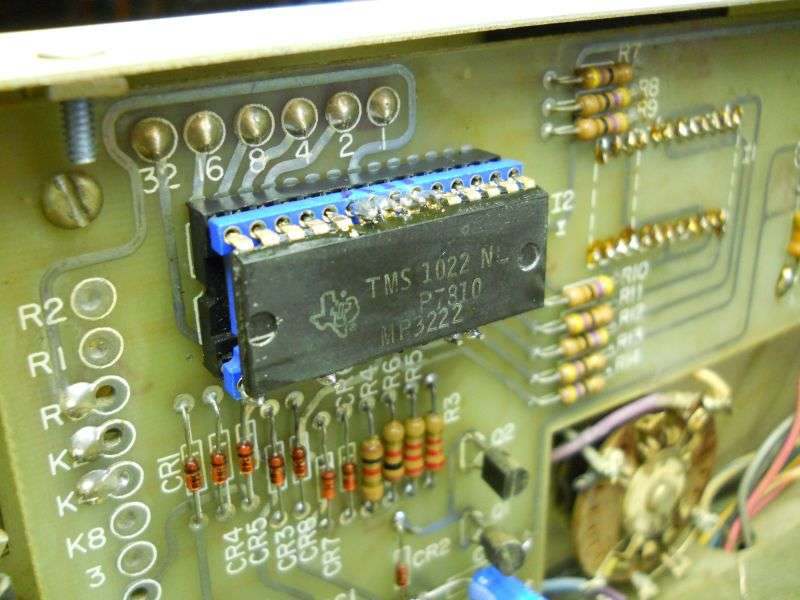
And yes, that's a 1978 date code on the TMS1022.
Was this quirky trick worth the price of that 95-dollar chip? Just couldn't bring myself to throw it away if the old one would still work.
73
There is a CD4008 4-bit adder chip between the microcontroller (CPU) and the PLL chip. Changed that, now I get different wrong frequencies. Changed the MC145106 PLL chip. No change.
This left me with one remaining part to blame. The TMS1022 microcontroller that runs the channel digits, selector knob and feeds the binary code to the PLL.
This part costs a better part of a hundred bucks shipped. But if that's what it needs, no substitutes exist. The programming in this integrated circuit can't be changed. No "erase and flash" chips existed in 1978.
Gently pulled it out of the socket. Bad news. Eight pins have rotted through enough to fall off. Not good. Is there a word for "octaplegic"?

Even if this part is in fact working like it should, there's a problem getting it connected to the radio with eight pins missing.
Tried a spare TMS1022, didn't change a thing. Looks like the chip with the eight broken legs was okay before the stress of removal.
But hey, found the problem and now it works with the expensive replacement chip. A previous 'extra' channel expansion had been botched, and that was the root of the fault. But what about the factory chip? The pins are silver plated. Texas Instruments did this to reduce the heat needed to solder the pins. But this radio puts it into a socket. Exposed silver will tarnish. Tarnish is not a good electrical conductor. I suspect there is some chemical interaction that made the broken pins fall off. Good thing it's only eight of them. Gonna try an octaplegic wheelchair, so to speak.

This 28-pin socket has what they call "machine-tool" pins. Gets a good grip on a #24 wire and requires very little force to insert the chip.
Gotta tin the remaining "shoulders" where the pins fell off. Will require some flux. This liquid flux should do the job.

With any luck the heat needed to tin these surfaces won't cause internal chip damage.

Seems to solder up okay on this side.

And this side.

Once it's in place, we get all the correct 40 channel frequencies where they should be.

And yes, that's a 1978 date code on the TMS1022.
Was this quirky trick worth the price of that 95-dollar chip? Just couldn't bring myself to throw it away if the old one would still work.
73
